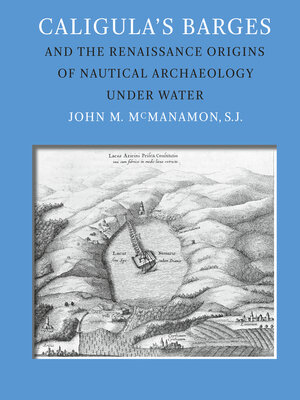Caligula's Barges and the Renaissance Origins of Nautical Archaeology Under Water
ebook ∣ Ed Rachal Foundation Nautical Archaeology Series
By John M. McManamon

Sign up to save your library
With an OverDrive account, you can save your favorite libraries for at-a-glance information about availability. Find out more about OverDrive accounts.
Find this title in Libby, the library reading app by OverDrive.



Search for a digital library with this title
Title found at these libraries:
| Library Name | Distance |
|---|---|
| Loading... |
Sometime around 1446 A.D., Cardinal Prospero Colonna commissioned engineer Battista Alberti to raise two immense Roman vessels from the bottom of the lago di Nemi, just south of Rome. By that time, local fishermen had been fouling their nets and occasionally recovering stray objects from the sunken ships for 800 years. Having no idea of the size of the objects he was attempting to recover, Alberti failed.
For most of the next 500 years, various attempts were made to recover the vessels. Finally, in 1928, Mussolini ordered the draining of the lake to remove the vessels and place them on the lake shore. In 1944, the ships burned in a fire that was generally blamed on the Germans.
John M. McManamon connects these attempts at underwater archaeology with the Renaissance interest in reconstructing the past in order to affect the present. Nautical and marine archaeologists, as well as students and scholars of Renaissance history and historiography, will appreciate this masterfully researched and gracefully written work.
For most of the next 500 years, various attempts were made to recover the vessels. Finally, in 1928, Mussolini ordered the draining of the lake to remove the vessels and place them on the lake shore. In 1944, the ships burned in a fire that was generally blamed on the Germans.
John M. McManamon connects these attempts at underwater archaeology with the Renaissance interest in reconstructing the past in order to affect the present. Nautical and marine archaeologists, as well as students and scholars of Renaissance history and historiography, will appreciate this masterfully researched and gracefully written work.







